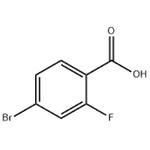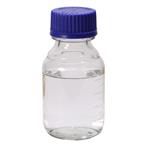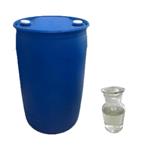- Epichlorohydrin
-

- $50.00 / 1KG
-
2023-12-23
- CAS:106-89-8
- Min. Order: 1KG
- Purity: 99%
- Supply Ability: g-kg-tons, free sample is available
- Epichlorohydrin
-

- $0.00 / 1KG
-
2023-09-06
- CAS:106-89-8
- Min. Order: 1KG
- Purity: 99%
- Supply Ability: 500000kg
- Epichlorohydrin
-

- $10.00 / 1kg
-
2023-07-31
- CAS:106-89-8
- Min. Order: 10kg
- Purity: 99%
- Supply Ability: 20tons
Related articles - The Application of Epichlorohydrin
- Epichlorohydrin is manufactured from allyl chloride and is widely used as a chemical intermediate. A major use is in the synth....
- Oct 19,2021
|
| | Epichlorohydrin Chemical Properties |
| Melting point | -57 °C | | alpha | -1~+1°(D/20℃)(c=1,CH3OH) | | Boiling point | 115-117 °C(lit.) | | density | 1.183 g/mL at 25 °C(lit.) | | vapor density | 3.2 (vs air) | | vapor pressure | 13.8 mm Hg ( 21.1 °C) | | refractive index | n20/D 1.438(lit.) | | Fp | 93 °F | | storage temp. | Store below +30°C. | | solubility | 65.9g/l | | form | Liquid | | color | APHA: ≤20 | | Specific Gravity | 1.183 (20/4℃) | | Odor | Pungent, garlic; sweet, pungent; like chloroform. | | explosive limit | 3.8-21%(V) | | Water Solubility | 6 g/100 mL (10 ºC) | | FreezingPoint | -57.2℃ | | Merck | 14,3611 | | BRN | 79785 | | Henry's Law Constant | 3.42(x 10-5 atm?m3/mol) at 25 °C (static headspace-GC, Welke et al., 1998) | | Exposure limits | TLV-TWA(skin) 8 mg/m3
(2 ppm) (ACGIH);
STEL (15 min) 19 mg/m3
(5 ppm) (NIOSH). | | Dielectric constant | 22.9(20℃) | | Stability: | Unstable. Flammable - note wide explosion limits and low flash point. | | LogP | 0.45 at 20℃ | | CAS DataBase Reference | 106-89-8(CAS DataBase Reference) | | IARC | 2A (Vol. 11, Sup 7, 71) 1999 | | NIST Chemistry Reference | Oxirane, (chloromethyl)-(106-89-8) | | EPA Substance Registry System | Epichlorohydrin (106-89-8) |
| Hazard Codes | T | | Risk Statements | 45-10-23/24/25-34-43 | | Safety Statements | 53-45 | | RIDADR | UN 2023 6.1/PG 2 | | WGK Germany | 3 | | RTECS | TX4900000 | | Autoignition Temperature | 779 °F | | TSCA | Yes | | HS Code | 2910 30 00 | | HazardClass | 6.1 | | PackingGroup | II | | Hazardous Substances Data | 106-89-8(Hazardous Substances Data) | | Toxicity | LD50 orally in rats: 0.09 g/kg (Smyth, Carpenter) | | IDLA | 75 ppm |
| | Epichlorohydrin Usage And Synthesis |
| Description | Epichlorohydrin is a kind of organochlorine compound as well as epoxide. It can be used as an industrial solvent. It is a highly reactive compound, and can be used for the production of glycerol, plastics, epoxy glues and resins, and elastomers. It can also be used for the production of glycidyl nitrate and alkali chloride, used as the solvent of cellulose, resins, and paint as well as being used as an insect fumigant. In biochemistry, it can be used as a crosslinking agent for the production of Sephdex size-exclusion chromatography resins. However, it is a potential carcinogen, and can cause various kinds of side effects on respiratory tract and kidneys. It can be manufactured through the reaction between allyl chloride with hypochlorous acid as well as alcohols.
| | Chemical Properties | Epichlorohydrin (molecular weight = 92.53 g/mol) is a colorless liquid with a sweet or garlic-like pungent odor. It is soluble in water (6.6 × 104 mg/l at 25 °C) and miscible with most organic solvents. | | Uses | Epichlorohydrin is mainly used in the production of epoxy resins. It was also used as a solvent for paints, varnishes, lacquers, cellulose esters and ethers, and gums. Epichlorohydrin was historically used as an insecticide fumigant. | | Environmental Fate | Epichlorohydrin may be found in the environment as a result of release in waste streams of resin, paint and lacquer, cellulose ester/ether, and gum production. The high vapor pressure of epichlorohydrin maintains it as a gas in the atmosphere, where it is degraded by photochemically produced hydroxyl radicals (half-life=36 days). Epichlorohydrin is highly mobile in soil, evaporates quickly from dry soil, and is extensively hydrolyzed in moist soil and water. It is not expected to be adsorbed to sediments and suspended particles and is not expected to bioaccumulate in aquatic organisms(NLM, 2013). | | References | https://en.wikipedia.org/wiki/Epichlorohydrin
https://pubchem.ncbi.nlm.nih.gov/compound/epichlorohydrin#section=Top
| | Description | Epoxy resins of the bisphenol A type are synthesized
from epichlorhydrin and bisphenol A. This leads to
bisphenol-A diglycidyl ether, which is the monomer
of bisphenol-A-based epoxy resins. Sensitization to
epichlorhydrin occurs mainly in workers in the epoxy-resin industry. Sensitization in individuals not working
at epoxy resin plants is rare. It has however been described to occur after contact with a soil fumigant,
due to solvent cement and in a worker in a pharmaceutical
plant, in a division for drug synthesis.
Epichlorhydrin was used for the production of both
drugs propranolol and oxprenolol. | | Chemical Properties | Epichlorohydrin is a colorless liquid with
a slightly irritating, chloroform-like odor. | | Physical properties | Clear, colorless, mobile liquid with a strong, irritating, chloroform-like odor. Odor threshold
concentration is 0.93 ppm (quoted, Amoore and Hautala, 1983). | | Uses | Commercially the most important use is production of glycerine. Large volumes are consumed in nonglycerine areas, which largely consist of the various epoxy resins. It has use as a solvent and in the production of epichlorohydrin rubber. | | Uses | Epichlorohydrin is used to make glycerol,epoxy resins, adhesive, and castings; asderivatives for producing dyes, pharmaceu-ticals, surfactants, and plasticizers; and asa solvent for resins, gums, paints, andvarnishes. | | Uses | Solvent for natural and synthetic resins, gums, cellulose esters and ethers, paints, varnishes, nail enamels and lacquers, cement for Celluloid. As stabilizer. | | Definition | ChEBI: An epoxide that is 1,2-epoxypropene in which one of the methyl hydrogens is substituted by chlorine. | | Production Methods | Epichlorohydrin can be prepared from 1,3-dichloropropanol-2, 2,3- dichloropropanol-1, or allyl chloride. Commercially it is prepared as an intermediate in glycerol synthesis via alkaline hydrolysis of glycerol dichlorohydrin. Both come from allyl chloride. Epichlorohydrin reacts with monohydric alcohols to give ethers by opening the oxide ring. It will react with ethers, aldehydes, ketones, organic acids and amines to give a wide variety of useful syntheses. | | Synthesis Reference(s) | Organic Syntheses, Coll. Vol. 2, p. 256, 1943
The Journal of Organic Chemistry, 48, p. 3831, 1983 DOI: 10.1021/jo00169a052 | | General Description | A clear colorless liquid with an irritating chloroform-like odor. Density 9.8 lb / gal. Flash point 87°F. Polymerizable. If polymerization takes place inside a closed container, the container is subject to violent rupture. Irritates the skin and respiratory system. Toxic by ingestion. A confirmed carcinogen. Vapors heavier than air. Used to make plastics and as a solvent. | | Air & Water Reactions | Highly flammable. Water soluble. | | Reactivity Profile | Epichlorohydrin may polymerize exothermically if heated or contaminated. Reacts explosively with aniline. Ignites on contact with potassium tert-butoxide. Reacts with trichloroethylene to give the explosive dichloroacetylene. Violent reaction with sulfuric acid or isopropylamine. Exothermic polymerization on contact with strong acids or bases, zinc, aluminum, aluminum chloride, iron, ferric chloride [Sax, 9th ed., 1996, p. 1469]. | | Hazard | Toxic by inhalation, ingestion, and
skin absorption; strong irritant, a carcinogen.
Flammable, moderate fire risk. TLV: 0.5 ppm; animal carcinogen. | | Health Hazard | Epichlorohydrin is toxic, carcinogenic, and astrong irritant. Its vapors can produce irrita-tion in the eyes, skin, and respiratory tract.Exposure to high concentration resulted indeath in animals, injuring the central nervoussystem. The liquid can absorb through humanskin, causing painful irritation of subcuta-neous tissues (ACGIH 1986). The symptomsof toxicity from high dosage in test animalswere paralysis of muscles and slow devel-opment of respiratory distress. Long expo-sures at 120 ppm for several hours resultedin lung, kidney, and liver injury in rats(Gage 1959). Ingestion by an oral routecaused tremor, somnolence, and ataxia inmice (NIOSH 1986). The toxic symptomsand lethal doses varied widely with animalspecies. The toxic metabolite of epichlorhy-drin could be ?- chlorohydrin ; thelatter was produced in vitro by rat livermicrosomes (Gingell et al. 1987).
A 25 ppm concentration may be detectableby odor. Exposure at this level may causeburning of the eyes and nose in humans.Above 100 ppm even a short exposure maybe hazardous to humans, causing nausea,dyspnea, lung edema, and kidney injury.
Epichlorohydrin is mutagenic and hasshown carcinogenicity in test animals. Itcaused tumors in the lungs and nose andat gastrointestinal and endocrine sites. Expo-sure to this compound caused harmful repro-ductive effects on fertility and birth defectsin mice. | | Health Hazard | Epichlorohydrin is caustic as both a liquid and gas. Irritation of the eyes and skin, and skin sensitization has been observed. Exposure to epichlorohydrin has caused inflammation of the lungs, asthmatic bronchitis, and liver and kidney damage. In acute poisonings, death may be caused by respiratory paralysis. | | Fire Hazard | When heated to decomposition, Epichlorohydrin evolves highly toxic fumes of phosgene and carbon monoxide. Reactive and incompatible with strong oxidizers, strong acids, caustics, zinc, aluminum, chlorides of iron and aluminumand compounds with an active hydrogen atom, including water. Unstable, avoid heat, contaminants, strong acids and bases, certain curing agents such as ethylenediamine. Hazardous polymerization may occur. | | Flammability and Explosibility | Flammable | | Chemical Reactivity | Reactivity with Water Mild reaction; not likely to be hazardous; Reactivity with Common Materials: No reaction; Stability During Transport: Stable; Neutralizing Agents for Acids and Caustics: Not pertinent; Polymerization: Can polymerize in presence of strong acids and bases, particularly when hot; Inhibitor of Polymerization: None used. | | Contact allergens | Epoxy resin of the Bisphenol A type is synthesized
from epichlorhydrin and bisphenol A. It leads to bisphenol
A diglycidyl ether, which is the monomer ofbisphenol-A-based epoxy resins. Sensitization to
epichlorhydrin occurs mainly in workers of the epoxy
resin industry. Sensitization in individuals not working
at epoxy resin plants is rare. It has, however, been
described to occur following exposure to a soil fumigant,
due to solvent cement, and in a worker in a pharmaceutical
plant, in a division of drug synthesis.
Epichlorhydrin was used for the production of drugs
propranolol and oxprenolol. | | Safety Profile | Confirmed carcinogen
with experimental carcinogenic data. Poison
by ingestion, skin contact, intravenous, and
intraperitoneal routes. Moderately toxic by
inhalation. An experimental teratogen.
Other experimental reproductive effects.
Human systemic effects by inhalation:
respiratory, nose, and eyes. Human mutation
data reported. A skin and eye irritant. A
sensitizer. Flammable liquid when exposed
to heat or flame. Explosive reaction with
andine. Reaction with trichloroethylene
forms the explosive dichloroacetylene.
Ignition on contact with potassium tertbutoxide. Violent reaction with sulfuric acid
or isopropylamine. Exothermic
polymerization on contact with strong acids,
caustic alkalies, aluminum, aluminum
chloride, iron(II1) chloride, or zinc. When
heated to decomposition it emits toxic
fumes of Cl | | Potential Exposure | Epichlorohydrin, an organochlorine, is
used in the manufacture of many glycerol and glycidol derivatives and epoxy resins; as a stabilizer in chlorine-containing
materials; as an intermediate in the preparation of cellulose
esters and ethers, paints, varnishes, nail enamels, and lacquers;
as a cement for celluloid. It is used as an intermediate in the
manufacture of various drugs. Increased cancer risk. | | First aid | If this chemical gets into the eyes, remove anycontact lenses at once and irrigate immediately for at least15 min, occasionally lifting upper and lower lids. Seek medical attention immediately. If this chemical contacts theskin, remove contaminated clothing and wash immediatelywith soap and water. Seek medical attention immediately. Ifthis chemical has been inhaled, remove from exposure,begin rescue breathing (using universal precautions, including resuscitation mask) if breathing has stopped and CPR ifheart action has stopped. Transfer promptly to a medicalfacility. When this chemical has been swallowed, get medical attention. Give large quantities of water and inducevomiting. Do not make an unconscious person vomit.Medical observation is recommended for 24-48 h afterbreathing overexposure, as pulmonary edema may bedelayed. As first aid for pulmonary edema, a doctor orauthorized paramedic may consider administering a corticosteroid spray | | Carcinogenicity | Epichlorohydrin is reasonably anticipated to be a human carcinogenbased on sufficient evidence of carcinogenicity from studies in experimental animals. | | Environmental fate | Biological. Bridié et al. (1979) reported BOD and COD values of 0.03 and 1.16 g/g using
filtered effluent from a biological sanitary waste treatment plant. These values were determined
using a standard dilution method at 20 °C for a period of 5 d. When a sewage seed was used in a
separate screening test, a BOD value of 0.16 g/g was obtained. The ThOD for epichlorohydrin is
1.21 g/g.
Chemical/Physical. Anticipated products from the reaction of epichlorohydrin with ozone or
OH radicals in the atmosphere are formaldehyde, glyoxylic acid, and ClCH2O(O)OHCHO (Cupitt,
1980). Haag and Yao (1992) reported a calculated OH radical rate constant in water of 2.9 x
108/M?sec. | | storage | Epichlorohydrin is stored in a well-ventilated,cool place isolated from combustible andoxidizable materials, all acids and bases,and anhydrous metal halides. Protect fromphysical damage. It is shipped in metaldrums. | | Shipping | UN2023 Epichlorhydrin, Hazard class: 6.1;
Labels: 6.1-Poisonous materials, 3-Flammable liquid. | | Purification Methods | Distil epichlorohydrin under atmospheric pressure, heat it on a steam bath with one-quarter its weight of CaO, then decant and fractionally distil it. [Beilstein 17 V 20.] | | Toxicity evaluation | Epichlorohydrin is an alkylating agent that is mutagenic. It
may induce DNA interstrand cross-links, chromosomal
aberrations, and breaks. It is also an irritant, sensitizer, and
corrosive. | | Incompatibilities | May form explosive mixture with air.
Slowly decomposes on contact with water. Heat or strong
acids; alkalies, metallic halides, or contaminants can cause
explosive polymerization. Violent reaction with strong oxidizers, aliphatic amines; alkanolamines, amines (especially
aniline), alkaline earths; chemically active metals (chlorides
of aluminum, iron zinc); powdered metals (aluminum,
zinc); alcohols, phenols, organic acids; causing fire and
explosion hazard. Will pit steel in the presence of water.
Thermal decomposition forms highly toxic phosgene gas.
May accumulate static electrical charges, and may cause
ignition of its vapors. | | Waste Disposal | Incineration, preferably after
mixing with another combustible fuel. Care must be exercised to assure complete combustion to prevent the formation of phosgene. An acid scrubber is necessary to remove
the halo acids produced. Consult with environmental
regulatory agencies for guidance on acceptable disposal
practices. Generators of waste containing this contaminant
(≧100 kg/mo) must conform with EPA regulations governing storage, transportation, treatment, and waste disposal |
| | Epichlorohydrin Preparation Products And Raw materials |
|